Following a recent agreement struck with the United States Department of Defense, the British Army say that they will be embarking on a five-year programme to update their M270 Multiple Launch Rocket Systems (MLRS).
UPDATE – This article has been corrected as we incorrectly reported that the range of this system was 499km, the actual range is 400km.
Upgrades will be made to 44 launchers, which are currently in-service, and will include a new armoured cab and upgraded automotive and launch mechanism components.
“The upgrades will ensure that the Army’s Land Deep Fires capability remains strong for the next three decades and that the British Army has the technological capability to quickly meet the threats of today and tomorrow.
Taking advantage of the long-standing MLRS collaboration with the US and key allies, work will start on upgrading the first tranche of launchers in March 2022 with the fleet going through production over a four-year period. The upgrades will keep the equipment in service until 2050.”
It is understood that The work will be carried out under an existing production contract with Lockheed Martin Missiles and Fire Control with the work being carried out at Red River Army Depot and Lockheed Martin’s facility in Camden, Arkansas.
The British Army add that the UK is also developing UK-specific systems for the new launchers, including Composite Rubber Tracks, and a vehicle camera and radar system. A new Fire Control System will be developed collaboratively with the US, UK, Italy, and Finland.
“To ensure soldiers are not outranged, the Army will develop a new extended range missile with MLRS partners, to be fired from the updated launchers, which should be in-service by 2025. The Guided MLRS Extended Range (GMLRS-ER) missile will extend the Army’s reach from 84 to 150km. “
The 44 updated launchers will also be able to fire the US’s Precision Strike Missile (PrSM) which has a range of 400km and is expected in-service from 2024.
“These weapons will place the British Army at the cutting edge of global deep fires capability, ready to respond to long range air defence and missile threats presented by hostile actors.”


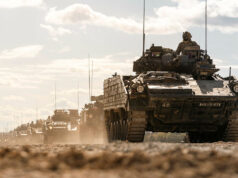
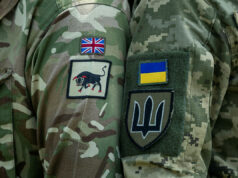
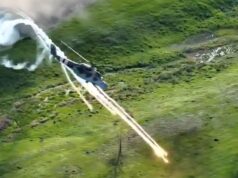

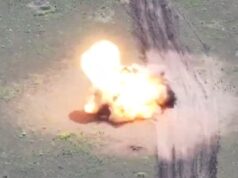

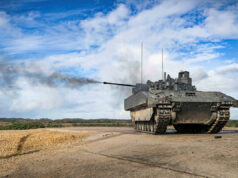
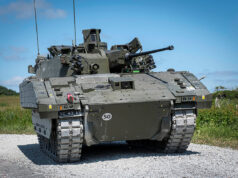



Also Army has announced a new high-speed medium helicopter to be jointly operated by Army and RAF and to include “a broad range of recent advances in technology, production methods and operational concepts will be used in the design of the bespoke medium helicopter that will bring maximum capability and cost saving benefits to all three services, and keep the Army at the leading edge of technology”
Sounds more like the US FVL programme than the previously annouced Puma replacement programme. The word ‘design’ and ‘bespoke’ suggests it will be a completely new programme to replace maybe Bell 212, 412, Puma and SAS Dauphins. There is a joint European Medium Helicopter Programme of which Leonardo is already a part.
If might be the Tilt-Rotor everyone here seems to want so much although the RN is not involved.
https://www.army.mod.uk/news-and-events/news/2021/03/medium-helicopter-programme/
I’ll bet it won’t be a Tilt Rotor, It has to replace Gazelles too, they are like little rally cars compared to Pumas.
These are medium helicopter programs, nothing to do with Gazelle.
The report published by the MOD specifically mentioned Gazelle along with Puma and 2 others. I’m only quoting what was published.
No it didn’t and no you are not.
not even that. they look like flying glass bubbles! I can’t believe the army is still using s**t like that!
There are two programs, you are confusing them. Firstly, the interim Puma replacement for an off the shelf design, and secondly, a longer term program for a brand new helo to replace both the interim’s and Merlin. The second being an international collaboration.
I’m reading the current notification.
They want them in service within 3 years, it wont be a wholly new aircraft – theres no time, it will be a customised variant of an existing model.
There is a real sense of pace to all of this for once which is quite exhilarating.
The announcement did originally include the Gazelles, I recall, along with the various Bell variants and Puma.
Hopefully it means that the new aircraft can replace the Bells and Puma directly, and allow the Wildcats to take over the Gazelle liaison role by giving the AAC a similar troop carrying capability that the old Lynx provided
That would make sense, I think?
Going by other articles some suggestion has made that the AW 149 and the Blackhawk could be in the frame , no mention of a Gazelle replacement .
My mistake, Gazelle was mentioned as being in line for replacement on this site, not in the official docs. Would make sense though, to replace Gazelle with the Wildcats, and replace the wildcats in their current role with more of the new Medium helicopter… I’m not optimistic however.
I would agree with you wildcats replace Gazelle , medium helicopter AW149/Black Hawk ? and chinook heavy lift
Several options exist….no doubt UK built will be a part of it, and inter service squabbling between RAF and AAC!
With Drones dawdling over the horizon giving your Army real time situational awareness the UK Army with this Rocket Battery will be almost independent of the Air-force . The Australian Army must get rid of those ridiculous and hated Abrams and take the migrant soldiers who inevitably get stuck in vehicles as no Australian Soldier goes to war sitting down and stuff them in the USMC Truck version of these along with hurrying up the Reaper Drone program.
WTF
Dude you OK? Not making any sense.
Yeah , am now , was a interpretation of Jackson Pollock done literal derived through the same inspiration he used and comes pretty close to his style . But what i meant is your Army has the ability to Interdict out to 3rd Line Logistics without resorting to the Air Force. The thing about manning vehicles , well the English are not necessarily seen as timid and useless as offensive infantry its just that they’re better in a vehicle than slowing you down what with getting lost all the time and not knowing what a bayonet is for .
The British are one of the few country’s that have actually us3d there bayonets in combat in recent times Iraq/Afghanistan
British infantry best close combat soldiers around, and as an aside, fixing bayonets is quite common, both training an on ops.
Don’t forget house clearing….
I heard the Australians only got Abrams (totally wrong tank for them) because of wheeler-dealering by a retired US General.
Know there’s been talk of replacing AS90 but had been put back a few years Rockets are great but still need big guns but what type of system who knows ?
maybe they can fire HE guided munitions?
Rockets are great, but they are very expensive and so will quickly be depeated. Traditional artillary is still needed to maintain constant fire.
i guess so but rockets need less crew then art according to the army website.
and we have a semi-failing recruitment programme…. soooo…..
I suspect this is false economy, as total supply chain is probably longer wtih rockets, which requires more overall soliders. Plus they could stop cutting back numbers every review and have less troop number issues.
My guess is the current thinking is have lots of shinny gear but not a lot of supplies/ammo/etc and hope no we don’t have a war where it is found out yet again.
Why would we need to recruit when reducing numbers?
ermm to maintain sizeable force?
Well whilst reducing the numbers recruitment isnt exactly a priority is it?
so we shouldn’t reduce numbers but instead focus on increasing the size.
You always need to recruit to maintain youth in your ORBAT, essential in the Army as fighting in close combat is a young man’s game. The RN and RAF could cope with older personnel.
Traditional Arty is still expensive, an L119 fuse for the small 105mm HE rd costs just under a grand! Its all expensive, you need all variants of depth fire, and close support, both x rds FFE or “Fire mission Rocket”
Army’s being ripped off… A 4.5 HE shell with cartridge attached and fuzed was around 600 quid if I remember correctly.
Probably a bit more now they are base bleed extended range rounds.
Army’s always getting ripped off mate.
MRLS can fired a guided rocket that contains a GPS/INS system, that allows it to fly to specific coordinate. It has an impact error measured in metres. Hence the 40km sniper moniker. However, there is also a semi-active guided rocket, that requires a 3rd party to designate the target.
Excalibur round, 155mm, GPS guided. As for the system to replace AS90 possibly wheeled Archer.
BAE Systems Bofors have integrated the Archer 155 mm/52 artillery system onto a German Rheinmetall MAN Military Vehicles (RMMV) HX2 (8×8) platform . This would fit the bill and keep the Bae shareholders happy.
Will take a look 👍
ISDR Command Paper…..£ 800 million will be invested in a new automated FIRES platform…Bae already in talks .re Archer derivative.
with an additional 250 million for this MLRS upgrade program.
Yes
Up to 135 I think the number is. It’s a good looking machine if nothing else.
A mean, mean,good looking machine!
hmm we will lack in air we need more SAM. the stormer and reaper are good but there’s a limit to their capabilities. plus we haven’t got them is large quantities. we really on the frigates to do it. but during war the frigates are at sea protecting the carriers or other strike groups. we either need to increase frigate numbers or invest is SAMs or anti-ballistic defences like the bloodhound from few years ago.
You need to invest in a decent Spell Checker.
ya don’t think Microsoft is willing to upgrade its b******t
About a year ago it was said the Army were to get Sky sabre but all gone quite on that front ,can anyone put some light on this.🤔
https://en.wikipedia.org/wiki/CAMM_%28missile_family%29
Its all going through according to wiki.
Thanks mate
Still happening mate. Although if we get 30 systems for 1 Regiment we will be lucky.
Cheers we can live and hope .
Cor I’d bite the hand off for 30.
I expect a Starstreak variant of Boxer will be on their wish list.
ok that’s sorts out strike fighters and heli ‘s. but what about ballistic missiles or ICBMs? we still need to defend against those.
Concepts of ops, Stormers and land Ceptor are LLAD, albeit with land ceptor a much increased in range and capability, the interception of ballistic missiles is well past their capability in the land theatre. That takes other systems, such as those on type 45s, Astor 30 missiles along with the Samason etc. This is already been trailed but unlikely it will progress much further IMHO. The Army has never had a system which can defeat ballistic missiles, and most likely never will. The Army is more concerned about tactical considerations in the land environment, and that’s where Stormer and Land Ceptor come in.
okay but during the cold we had a theatre defence system called the bloodhound protecting key targets e.g. airfields where the V bombers operated from. so what was that about?
That was exactly that, static defence by the RAF protecting it’s bases, originally V bomber and as the system became outdated it was moved to both BAOR, then back again, to remain at a few sites in UK. The RAF regiment also operated rapier, same concept, shorter range. While the bloodhound had a decent range, it was there to defend airbases and not employed as a ground based ballistic missile system defence system.
Army had Thunderbird, 1959-1977, for wide area air defence.
Same as bloodhound, still army GBAD and not BMD which was the original query.
can’t we have a similar system like that. but designed to deal with modern threats
Yes, but it comes down to cost.
The current Sampson/Aster missile combination has in trials and exercises proven itself against short and medium-ish range ballistic missiles. These were all atmospheric engagements. To do the exoatmospheric engagements you will need the Aster 30 BMD, but there has been little published progress on that front. A better design which has been proven to work against exoatmospheric targets is the SM3 missile. You would also have to ramp up Sampson’s power significantly to deal with these higher altitude targets.
Sampson is a S band (2 to 4 Ghz) radar and at those heights/ranges would prove to be more difficult to discriminate between a decoy and a warhead due to its longer wavelength and diverging beam. So a higher frequency (shorter wavelength) radar operating in the C (4 to 8 Ghz) band or preferably in the X (8 to 12 Ghz) band that can generate a proportionally narrower beam would be better. If you had the resources available you could step up the Sampson’s signal processing and try to overcome this problem.
The problem though, is as the frequency increases the effective range decreases, which is due to attenuation losses caused by the air. Therefore, for an X band radar to be comparable in range to Sampson or preferably the SMART-L MM radar. The effective radiated power output would have to increase by 3 if not 4 times. This means the radar will not be cheap, as the individual transmitter-receiver modules (TRMs) will need monster signal amplification and therefore need a heap of cooling. It may be possible to mount such a radar on a vehicle, but would more than likely need to be used from a fixed site, due to the support requirements.
Can it be done, yes of course it can be done, but it will cost significantly more than a standard Sampson/Aster combination. If you look at the US THAAD system, it uses the AN/TPY-2 X band radar. This is the type of system required for search and tracking of exoatmospheric targets.
A T45 would need to be positioned relatively close to the launch site.
Anti air systems like Bloodhound are obsolete!
You can only successfully shoot a ballistic missile in the boost stage, that is relatively close to the lunch site of the missile.
By the time a ballistic missile reaches our shores it is in Terminal Phase travelling at Hypersonic speed to a fixed target.
Not really possible to shoot down, maybe a rail gun in the future!
Anyway a warhead is designed to withstand re-entery heat.
Much cheaper to threaten retaliation!
not entirely true the s400 or the patriot is capable of shoot down balistic missiles. I was not saying we the blood hound again. i was saying we need something similar to counteract modern balistic missiles. You should have read through my post carefully before replying.
The Patriot can shoot down short range atmospheric missiles, but Never a Hypersonic warhead in Terminal Phase!
That is why we have Trident missiles, they can not be shot down yet. They could be shot down in boost stage or mid course stage if intercepter missile is launched along the path of a missile at the right place and time.
But would Sweden allow Russia to place intercepter batteries on their territory?
There have been at least two systems that have publicly shown that they can intercept an ICMB’s re-entry vehicle in the terminal phase, which are THAAD and SM3. However, both have had better successes intercepting the targets exoatmospherically in the mid phase.
The THAAD’s stationed in South Korea are likely to be able to intercept high altitude DPRK missile or re-entery vehicle. But likely in boost stage interception, due to the proximity of THAAD battery.
From publicly available information, the SM3 has been more successful in engaging exoatmospheric targets than THAAD. But it’s still better than nothing!
Yes, SM-3 B2 at over $20M a PoP!
With a range of 1200km.
That US missile has a very specific range…. 499km, do they fall into a different category if you can fire them 500km ???
Yep…INF Treaty limit is less than 500km. However if the wind is behind the rocket that would be acceptable!
Cheers mate, assumed there was a reason for the 499, seemed a bit arbitrary.
Seems like a made up figure to me, wonder what the real range is!
Exactly 499 km IAW the INF treaty of course! Not a km more! … 😁😂
About time
With a range of 499KM’s, It’s a good job Adolf didn’t have them.
V2’s?????
500km range is a fair old buffer zone for any ground forces with these nearby.
What would be used to see that far for targetting?
Usual recon assets, you wouldnt be shooting at units but identified staging posts such as rear command buildings, fuel and ammo dumps.
Would be interesting to know how accurate it is at that type of range. Being able to hit the ground at 500km is one thing, but being able to hit a target at that range is another.
Radar system?
Why don’t we just buy new and put it on boxer, this sounds remarkably like another very expensive LEP
lets keep these for training purposes but buy new for the operational force.
unless this is ridiculously cheap to upgrade I just wouldn’t do it, there must be something better out there we can buy off the shelf
HIMARS is an option, not for the armoured BCTs but the light role BCTs and the “deep fires” BCT.
The boxer chassis is extremely expensive for a vehicle that should not be on the front line. The upgrade sounds like they will replacing just about everything apart from the original chassis and because we are piggy backing off the US program that is already maturing it will not turn into Warrior 2.0.
Excellent! A big capability gap addressed.
Knowing the opposition has a bunch of these in an area must be a real moral killer. I would not want to be on the receiving end of a strike by these as they seem like they could really mess up my day.
Why 44? Why can’t we have 40 or 45 or better still 50. A nice round number! Who comes up with the numbers?
According to Think Defence there were originally 64 vehicles bought, 4 of which have been converted to repair/recovery so there should be 60 available unless any have been disposed of.
Assume some have been cannibalised for parts maybe? 44 should mean that the two RA regiments (1 regular, 1 AR) should be fully equipped. Not sure but I think they each have 2 or 3 batteries and some Exactor launchers as well? Can anyone confirm?
26 has 3 x Btys of MLRS and 1 x Exactor on trailers. The MLRS are GMLRS rockets, pretty effective. Good to see newer and better rockets for deep strike.
How many launchers per battery? 6 or 8, I guess?
6 but if 26 are like most other RA units prob 4 will be used the others will be gun park static. My bro is 7RHA and they used to have 3 x 6 gun Btys, but now 2 x 6 gun Btys but still only able to get 4 guns per Bty out for training and exercises.
I misread the title at first as “Britain to double the NUMBER of its M270 rocket artillery” and got excited then. Silly me!
44, that’s good as there was I believe 34 that are currently in use, so an uplift of numbers from stored assets and an increase in tech and rockets/range/accuracy. All good stuff, but as many of us have eluded to on many occasions, the RA are the future battle winners, they will dictate future tactics. The RA, properly funded and equipped are the formation which has the depth fire/Close support, AD, UAV, ISTAR etc and now all they need is a decent, low cost, loitering UAV, able to drop ordnance, or become a “suicide” drone as used in the Azerbaijain/Armenian conflict last October. The RA have been starved of funds for years, and maybe, now, the head sheds realise what a battle winning organisation it is.
Would the Watchkeeper fit the task for the loitering UAV? Or would the Army need to consider something else?
Not 100% sure but it’s a little old and chunky nowadays and has never quite acheived the status and capability it could have. But you can get better effects with smaller and more advanced UAVs nowadays.
A fair point. Be interesting to see what happens.
My other worry is the MLRS upgrade being the same life extension complexity of warrior and challenger. Hopefully as it’s basically what the US are already doing it’s a little more de-risked
It shoulnt be as the main effort will be the rockets and the firing data computers, with better comms. But then again I’m sure the Army will pay over the odds as per usual mate.
Watchkeeper capability is to do battlefield recon, they have a radar able to detect vehicles and even people, besides EO.
Yes, that was one of the reasons it was bought for. However, in a peer vs peer conflict I would not expect them to last long.
Do the Ground stations control them via a sat link, or are they controlled via something else?
The drones are controlled in two ways, although you can use either. A ground station will use an encrypted data-link for direct line of sight control. The direct link is usually used for take-off and landings. Once airborne, the operator can switch over to an encrypted satellite data-link. This is more for when the drone is flying out of line of sight. The satellite link can also be used for take-off and landings.
Cheers mate, a better understanding now.
How susceptible to jamming are they? Just wondering how much use they would be in a contested environment against a peer advisary with equal capabilities?
Only I don’t think using things like Predator against caves or sandpits gives a true reflection of their effectiveness, or lack of it!!!
The best way to look at it is, how did Iran manage to capture the US RQ-170 Sentinel UAV? In theory as the aircraft was being controlled via a satellite link. It should have been really hard to hack, especially as the data between the satellite and UAV is encrypted.
I suspect it was down to the fact that the UAV has an upper and lower aerial that is used for the command link. Normally when out of sight of the ground station, the UAV will be using the upper aerial to talk to the satellite. The satellites transmitter’s received power by the UAV would be quite low, due to the wide angle beam spread. If the Iranians it least knew the operating frequency, they could use a high power broadcast from a ground station to overwhelm the much smaller satellite signal, which basically jams it.
Normally when a military UAV looses its command signal it will start circling waiting to re-establish connection. If it doesn’t then after a prescribed amount of time it will then fly back to recovery location, so the ground station can re-establish the link.
In the case of the RQ-170, this doesn’t seem to have happened, which means the Iranians must have hacked the command signal to take-over control of the UAV, but how, did they have help?
Its likely the RQ-170 used a K band satellite datalink as this offers greater data bandwidth. The RQ-170 would have been using the latest encryption. So again begs the question of how did they do it? A lot has been reported that the GPS signal was spoofed, thereby giving the UAV false location information. Which on the face of it sounds plausible, but becomes more of a “really” when you look deeper. For starters, the UAV would still be visible by the ground station, so they could have taken direct control of the drone over from the autopilot, The drone would have a combined inertial navigation/GPS system. The two individual parts would monitor each other for inaccuracies. As the GPS was getting more and more divergent from the INS, this would have flagged up a fault and the UAV would try to return to the recovery location.
Therefore, it is likely that the UIAV was hacked, it was landed after all. It is also more likely that the US has stated the drone was lost due to a GPS hack, because that would mean they would have to admit heir datalink encryption was hackable. Thereby, possibly making all their UAVs and those used by their allies vulnerable.
The likely outcome is that the encryption would have been replaced as soon as possible, and significantly beefed up. Along with a number of revised protocols for when the UAV looses the command signal.
Any system that relies on a radio datalink is vulnerable to attack, just as a computer is vulnerable to a myriad of virus attacks. To maintain its security requires the encryption to be monitored and updated constantly. At some point we may see the link between the satellite and UAV using phased arrays to generate a much narrower the beam. Thereby making it harder to detect in the first place, but also making it harder to jam. Further on I would expect to see a laser datalink taking over, which is robust enough to account for the environment.
As far as a Predator, Reaper, Protector or Watchman remains survivable in a peer vs peer land conflict. It will be entirely dependent on how the enemy’s air defences remain intact, as they will be one of the priority targets in the conflict. If they can quickly and constantly replace their targeted radars, then life will be very short for our “non-stealthy” UAVs.
Cheers for taking the time to explain, good dit. With what you say being the case, doesn’t inspire a great deal of confidence in them. Imagine then that we will need a combo of stealthy UAVs and more discrete data links to ensure some survivability.
More positive news and the raft of newly announced programmes with relatively short times for service introduction does seem to mean they are really addressing the issues.
I am ‘cautiously’ very happy with the progress in transitioning our Armed forces to a high tech leaner, mobile strike force….
Me too, here’s hoping.
Yes, but where is my new RA Regiment firing Loitering munitions or HIMARS alongside GMLRS?
Loitering munitions and UAVs are the way forward for the RA. They will also need a Boy or two of anti-UAV AD but I may be stretching my imagination to far!
A boy or two! LOL. Never mind a battery, an entire regiment alongside the Sky Sabre and Starstreak Regiments, so each BCT can have a batteries worth. Even that is thin.
Bloody sausage fingers and I phones, plus auto correct equals gibberish!!!!!
Sounds like the ISR paper mate.
😂
I’ve read one of the batteries in suspended animation will be reactivated, taking the regiment to 4 fire batteries of GMLRS.
Back to square Brigades mate sorry BCTs…
I wonder if artillery in 10-30km range is in way out with proliferation of missiles like Spike NLOS.
I managed to find this post which I remembered seeing some time ago.
Are we looking to do the same?
USMC says goodbye to tanks and hello to long-range fires
https://www.janes.com/defence-news/news-detail/usmc-says-goodbye-to-tanks-and-hello-to-long-range-fires